- News
- Reviews
- Bikes
- Components
- Bar tape & grips
- Bottom brackets
- Brake & gear cables
- Brake & STI levers
- Brake pads & spares
- Brakes
- Cassettes & freewheels
- Chains
- Chainsets & chainrings
- Derailleurs - front
- Derailleurs - rear
- Forks
- Gear levers & shifters
- Groupsets
- Handlebars & extensions
- Headsets
- Hubs
- Inner tubes
- Pedals
- Quick releases & skewers
- Saddles
- Seatposts
- Stems
- Wheels
- Tyres
- Tubeless valves
- Accessories
- Accessories - misc
- Computer mounts
- Bags
- Bar ends
- Bike bags & cases
- Bottle cages
- Bottles
- Cameras
- Car racks
- Child seats
- Computers
- Glasses
- GPS units
- Helmets
- Lights - front
- Lights - rear
- Lights - sets
- Locks
- Mirrors
- Mudguards
- Racks
- Pumps & CO2 inflators
- Puncture kits
- Reflectives
- Smart watches
- Stands and racks
- Trailers
- Clothing
- Health, fitness and nutrition
- Tools and workshop
- Miscellaneous
- Buyers Guides
- Features
- Forum
- Recommends
- Podcast
review
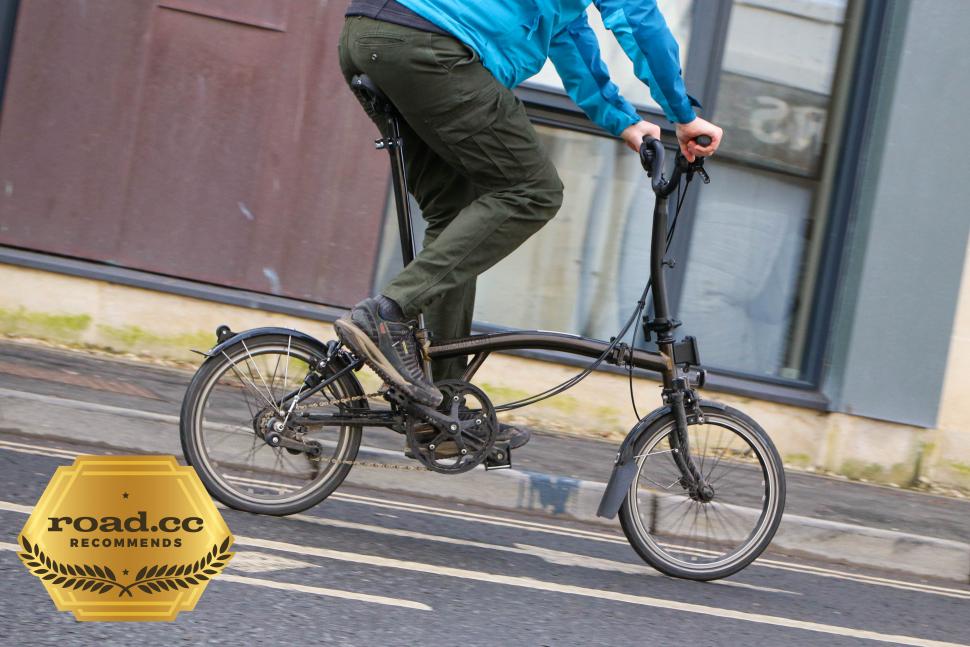 Brompton C Line Explore
Brompton C Line Explore £1,640.00
VERDICT:
The ultimate folding commuter bike that offers handling, comfort and gears to go much further
Good range of gears
Climbs very well
Super compact when folded
Fun to ride
Gears take a while to fathom
There are cheaper options
Weight:
12,300g
Contact:

This product has been selected to feature in road.cc recommends. That means it's not just scored well, but we think it stands out as special. Go to road.cc recommends
At road.cc every product is thoroughly tested for as long as it takes to get a proper insight into how well it works. Our reviewers are experienced cyclists that we trust to be objective. While we strive to ensure that opinions expressed are backed up by facts, reviews are by their nature an informed opinion, not a definitive verdict. We don't intentionally try to break anything (except locks) but we do try to look for weak points in any design. The overall score is not just an average of the other scores: it reflects both a product's function and value – with value determined by how a product compares with items of similar spec, quality, and price.
What the road.cc scores meanGood scores are more common than bad, because fortunately good products are more common than bad.
- Exceptional
- Excellent
- Very Good
- Good
- Quite good
- Average
- Not so good
- Poor
- Bad
- Appalling
The Brompton C Line Explore can climb hills surprisingly well, cruise at an impressive pace and provide the kind of comfort you need for longer days in the saddle. Its marketing even wafts the promise of round-the-world rides, so you can dream about a summer's worth of mini-adventures as this bike brings a smile to your winter commutes.
For more options, check out our guide to the best folding bikes, 'portable bikes for convenient commuting'.
It took me just half an hour to confirm what I already knew: this Brompton is fiendishly nippy and a lot of fun to ride. Glancing down at my watch I could see that I was cruising at a respectable 28kph (that's impressive for me on any bike). And I was getting a real kick out of jinking around potholes, flying over cattlegrids and taking corners at speed.
The road.cc office sits just off the Bristol Bath bike path. So I'd arranged to pick up the Brompton C Line Explore after a morning of Christmas shopping.
First impressions
Unboxing it, the first thing you notice is that everything has been blacked out. Where older models featured silver brake levers, cranks, seatposts and handlebars, this has all been replaced by a stealthy noir. There are a range of colours to brighten the paintwork including a new and rather fetching off-green 'matcha' (that's a tea apparently), a Fire Coral, Cloud Blue and a really glorious looking Flame Lacquer.
Bike unfolded and tyres pumped, I waved goodbye to the office and set out on the 30km trip home on a route that I normally use at the end of day-long rides. And with fresh legs, the Brompton positively zipped along, despite the rucksack, packed full of festive sherry. (Strava even reported a PB over the flattest 15k on this route... nice work, like and subscribe, etc.)
Getting up to speed was the tricky bit but Brompton has devised a clever solution to gearing. You get three wide range gears in the Sturmey Archer hub and another two via a derailleur. If you just use the hub lever on the right, you'll find the steps are pretty big. Switch from '2' to '3' and you might go from almost spinning out to grinding a gear that you're not quite ready for.
The two rings on the derailleur (13T and 16T rear sprockets) smooth those steps, giving you an effective '2 minus' and a '2 plus' that then allow you to progress to a '3 minus'. So you need to learn how to use hub and derailleur in unison and keep tabs on exactly where each one is.
Finally working out how to do that came as something of a revelation. It would have been an impressive bit of deduction, if it wasn't for the fact that I've been riding an elderly, six-gear Brompton since 2015 and had never twigged this was how they were supposed to work…
But this feature is arguably more important on the C Line Explore, because of the significantly wider 300% gear range on offer. This bike aims to give you options low enough to climb sustained hills and high enough to really eat up the miles.
Made for adventure?
When you do hit the hills the lowest gears proved able to cope with some of the toughest climbs within a 20km radius of my house. After a work meeting (bike folded under cafe table) it tore up Bridge Valley Road, a climb that was used on a stage of the Tour of Britain in 2016 and that features a challenging 70m of climbing at 9.4%. I may not have been as fast as the pros, but don't think I would have been too far behind my own time on a standard road bike.
If you've never ridden a Brompton before, you might need to get used to the narrow handlebar and stalk-like stem, but when you've worked out how to get the most from legs and arms, you realise that this bike can take on long, steep climbs with ease.
And as you whizz down the other side, the tyres hold the ground, soak up the bumps and corner exceptionally well. The flex in the frame design also helps to deliver a smoother ride than you might expect on such comically small, 16-inch wheels.
The rubber handlebar grips are super comfortable. The new trigger shifters and smaller brake levers all fall neatly under your fingers, so you always feel in control.
And when you need to slow down, the Brompton's dual-pivot calliper brakes prove to be sharp and responsive. I reckon they are almost as good as the disc brakes that I'm using on my main bike.
I certainly wouldn't want to have to deal with a puncture at the side of the road (especially if I had to disengage the hub gears on the rear wheel) but the 349x35 Schwalbe Marathon Racer tyres offer superb protection. In my eight years of riding a battered old Brompton, I have not once had a flat and I have used it through winter commutes, as a pub hack and on mini-adventures with some pretty manky 'off-road' sections.
That kind of reliability is what really allows you to daydream about the adventures this bike could unlock. Fold it up and stick it on the train to Exeter and you could ride across Dartmoor, wild camp overnight and then follow the Drake Trail down to Plymouth to catch a train home. Or you could head to Ravenglass in the Lakes, tackle Hardknott Pass, camp out and then catch the return train from Penrith the next day.
I'd like to have tested this over the summer and I reckon I could have got a decent lightweight camping setup in a carrier that connects to the front block and clip, standard on any Brompton. And if you were to upgrade with some extras like a dynamo hub and rear carrier you could seriously extend your aspirations.
On the 2019 edition of the Paris-Brest-Paris, I met a team of about 20 riders from Malaysia all attempting the 1,200km route on Bromptons. But even in the hands of an average rider, I reckon this bike could cover a good 80-140km a day, over lumpy terrain. And that puts all kinds of exciting mini-adventures within range.
The ultimate commuter
But let's be honest, the majority of people are going to be buying a Brompton for commuting, shorter rides and local errands. If you fancy trying one out, you'll find hire schemes at train stations around the country. (It costs from as little as £5 to hire one for 24 hours.)
For a new rider, the steering can feel a little twitchy at first, but as you get to grips with it, that quickly translates into agility that allows you to weave round traffic and avoid last-minute obstacles.
If you're using this bike with a train commute, then it folds down to the size of a suitcase and you never have to worry about a bike reservation. (Just don't forget it as you get off the train... I almost did.)
The folding process is a cinch (no matter what comedy skits on W1A might suggest) and tucking that left-hand pedal away is a chance to really savour what a design classic this is.
At the other end of your journey, it is great to walk past lines of people queuing at the taxi rank as you unfurl your bike and glide away. And if you have inherited a competitive gene, there's real fun to be had trying to keep up with road cyclists as you make your way to your next meeting. (That kind of childish pursuit is entirely beneath me.)
Away from the ubiquitous Brompton commute, you can fold it up and put it in a shopping trolley, take it into cafes, pubs and restaurants or stick it under your office desk. And that all means less chance of it getting stolen.
If everyone in your family already cycles then it's easier to justify an N+1 that can be stored in a wardrobe and doesn't mean another massive bike fighting for space in the hallway. The adjustable seatpost means anyone else can just jump on and ride it if they need to – Brompton reckons that this extender seatpost will work for anyone with up to a 35cm inside leg.
But be careful if you do leave it locked outside as the saddle can be removed easily, which feels like a bit of a design oversight.
Make a B-line for the C Line?
Brompton splits its range into four distinct categories. There's the affordable A Line, which at under the £1,000 mark offers three gears and the simplicity required for most city riding. Then you get the lightweight P Line at over £2,000, with a titanium rear frame, as tested by Matt Lamy last year (it's also available with electric assist, as tested on ebiketips this month). Or if you are feeling really flush you can go for the all-titanium T Line at over £4,000. I can't personally think of any reason to do that...
The C Line range starts at £1,250 for the two-speed Urban or the three-speed Utility. But it's the six-gear Explore that really hits the sweet spot for me and it's worth spending a little more money, because this is a bike that can do almost anything.
I don't ever see myself riding round the world on one (no matter how many times Brompton lets you know that someone has). I'd rather use my tourer for longer trips and endurance bike for long fast days out... but the Brompton covers pretty much every other ride I might do. What's more, it opens a world of exciting mini-adventures.
My old ML6 Brompton was already on life support when I was gifted it by a friend in 2015. Since then it has ridden across Dartmoor, to parties in the middle of nowhere, and on camping trips in Dorset. I've taken it on the Eurostar to Paris and ridden on big day rides out of the city. If you don't own one, you should. And for my money, this is the model to buy.
Value and conclusion
So how much of your folding stuff is this folding bike worth? I love my Brompton and I'm going to be sorry to say goodbye to this upgraded test bike. The C Line Explore does deliver a better range of gears, and it's a slicker looking bike, but it offers pretty much the same ride quality that I have come to love. It is a lot of money to shell out and in order to justify it you probably need to know that you are going to get the use out of it.
Yes, there are other (cheaper) folders out there, but none of them pack down as easily or as tidily as a Brompton.
I started out on a Dahon about 17 years ago and while that might have been marginally more comfortable to ride, it wasn't anywhere near as nippy or as much fun. Its folding system was definitely not as good or as public-transport friendly. The Dahon Qix D8 scored well in our test back in 2017, is a similar weight, offers bigger wheels and is much cheaper, so might be worth a look – if you can find one – or check out the more-readily-available eight-gear Dahon Mariner D8, another affordable (£725) option. It's a really good bike for around town and shorter journeys, but try to store it on a train luggage rack and it clearly doesn't live up to the same easy-folding promise as a Brompton.
The budget Carrera Intercity Disc 9 scored 9/10 in our test last year and at just £460 has plenty to warrant your attention, while the £850 Tern Link C8 came out as the best mid-price bike in our round-up of the best folding bikes.
The top spot is taken by this one, though. I'd say it's the ultimate commuter but can do so much more. If you want a cheaper folding bike for commuting and nothing else, then the A Line range is probably where you should be looking, but if you are in the market for a folding bike that can take you from the wilds of the urban jungle to a full-on, round-the-Wolds [Yorkshire] adventure, then I would push the boat out and opt for the six-gear C Line tested here.
Verdict
The ultimate folding commuter bike that offers handling, comfort and gears to go much further
road.cc test report
Make and model: Brompton C Line Explore
Size tested: n/a
About the bike
List the components used to build up the bike.
Main Frame Precision drawn heat-treated steel tubing with hand brazing and selected auto-brazed joints
Rear frame Hand brazed cold-formed micro-alloy steel tubing
Fork Steel brazed fork
Grips Lock-on grips with soft-compound rubber adhered to an engineered core
Seatpost Brompton Extended Chromoly steel tube. Suitable for maximum inside leg 35"/89cm
Saddle Brompton saddle, integrated carry handle, mounts for Brompton rear light and saddle bag
Seatclamp Composite seat clamp and rear frame clip
Pedals Brompton Folding left hand and non-folding right-hand pedals
Drivetrain Brompton Wide-range 6 speed drivetrain (2 x 3 speed), 300% range
Chainset 6061 forged aluminium crank with 50T chainring and integrated chainguard Bottom Bracket Square taper bottom bracket Chain Pusher Brompton Chain pusher
Shifter Brompton 2 and 3 speed Trigger shifters
Front Wheel Double-wall rim, 28 spokes, Brompton front hub
Rear Wheel Double wall rim, 28 spoke, Brompton Wide ratio 3 speed internal gear hub Rear Wheel Gear Hub 2 speed external gears (13 and 16 tooth)
Tyres 349 x 35C Schwalbe Marathon Racer. A puncture resistant tyre with a reflective sidewall
Tubes Schrader valve Mudguards
Mudguards with rubberized flap Brakes Brompton Dual Pivot Calipers Hinge Clamps Composite hinge clamp levers Lighting (reflectors) Front and rear reflectors
Headset Brompton headset
Tell us what the bike is for and who it's aimed at. What do the manufacturers say about it? How does that compare to your own feelings about the bike?
Brompton says: 'The C Line folding bike captures the same fun-to-ride, go-anywhere feeling it always has. And today, with refined geometry, sleek design updates and modernised components, it does it better than ever.'
The ultimate folding commuter, this is actually a brilliant all-round bike and made to inspire great micro-adventures.
Where does this model sit in the range? Tell us briefly about the cheaper options and the more expensive options
This is very much mid-range in the suite of Brompton models. The A Line is slightly cheaper and made for city riding while P Line and T Line models are lighter and get eye-wateringly expensive. This model hits a sweet spot for most riders.
Frame and fork
Overall rating for frame and fork
8/10
Tell us about the build quality and finish of the frame and fork?
Excellent Brompton build quality on the frame with very nicely finished paint work, hand brazing and selected auto-brazed joints.
Tell us about the materials used in the frame and fork?
The main frame is made from precision-drawn heat-treated steel tubing.
How was the bike in terms of height and reach? How did it compare to other bikes of the same stated size?
There's great control in terms of height with the extender seatpost, and the options of flat, mid and high bars give you extra flexibility to get this just right.
Riding the bike
Was the bike comfortable to ride? Tell us how you felt about the ride quality.
For a folding bike with 16-inch wheels this delivered a surprisingly comfortable ride even on longer days.
Did the bike feel stiff in the right places? Did any part of the bike feel too stiff or too flexible?
Stiff when you need it to be, and movement in the folding frame design gives a little extra flex to absorb bumps in the road.
How did the bike transfer power? Did it feel efficient?
It can accelerate quickly and feels efficient when you've built up speed.
Was there any toe-clip overlap with the front wheel? If so was it a problem?
No.
How would you describe the steering? Was it lively neutral or unresponsive? The steering can feel a little 'twitchy' at first but it's really very responsive and makes this bike manoeuvrable around town.
Tell us some more about the handling. How did the bike feel overall? Did it do particular things well or badly?
You have to adapt your style of riding and accept the peculiarities of this small-wheeler but it handles surprisingly well and is great fun to ride.
Which components had the most effect (good or bad) on the bike's comfort? would you recommend any changes?
Brompton's saddle works really well for me but I know plenty of people who have swapped the own brand seat for something that works better for them.
Rate the bike for efficiency of power transfer:
7/10
Rate the bike for acceleration:
7/10
Rate the bike for sprinting:
5/10
Rate the bike for high speed stability:
6/10
Rate the bike for cruising speed stability:
7/10
Rate the bike for low speed stability:
7/10
Rate the bike for flat cornering:
7/10
Rate the bike for cornering on descents:
7/10
Rate the bike for climbing:
8/10
The drivetrain
Rate the drivetrain for performance:
6/10
Rate the drivetrain for durability:
6/10
Long-term use of a Brompton suggests that the derailleur can be tricky to keep in tune.
Rate the drivetrain for weight:
6/10
The derailleur adds weight to the bike but it is worth it for the range of gears that it offers.
Rate the drivetrain for value:
6/10
Tell us some more about the drivetrain. Anything you particularly did or didn't like? Any components which didn't work well together?
The hub and derailleur arrangement smooths the steps between gears but with a 300% gear ratio there are still some big jumps in there that do make it hard to build speed steadily.
Wheels and tyres
Rate the wheels for performance:
8/10
Rate the wheels for durability:
9/10
Rate the wheels for weight:
7/10
Rate the wheels for comfort:
7/10
Rate the wheels for value:
7/10
Tell us some more about the wheels.Did they work well in the conditions you encountered? Would you change the wheels? If so what for?
The bike comes with 16-inch, double-wall-rim, 28-spoke wheels back and front. They do the job surprisingly well and impressed in a range of conditions.
Rate the tyres for performance:
9/10
Rate the tyres for durability:
9/10
Rate the tyres for weight:
6/10
Rate the tyres for comfort:
8/10
Rate the tyres for value:
8/10
Tell us some more about the tyres. Did they work well in the conditions you encountered? Would you change the tyres? If so what for?
The 349x35 Schwalbe Marathon Racer tyres offer great performance on this bike and real puncture protection.
Controls
Rate the controls for performance:
8/10
Rate the controls for durability:
8/10
Rate the controls for weight:
8/10
Rate the controls for comfort:
8/10
Rate the controls for value:
8/10
Tell us some more about the controls. Any particularly good or bad components? How would the controls work for larger or smaller riders?
The trigger-shifter gear levers and new-style brake levers are excellent and give you a great sense of control even at speed.
Your summary
Did you enjoy riding the bike? This bike is a joy to ride and you almost want to push the boundaries to find out what it can't do.
Would you consider buying the bike? Yes – waiting for my next Cycle to Work voucher to come up and I would most definitely consider this model.
Would you recommend the bike to a friend? Yes
How does the price compare to that of similar bikes in the market, including ones recently tested on road.cc?
This is more expensive than the majority of other folding bikes out there but it does the job it is designed for much better. Little has really changed here from the ML6 that I have been riding for years and still has plenty of miles left in it.
Rate the bike overall for performance:
9/10
Rate the bike overall for value:
5/10
Use this box to explain your overall score
Good range of gears stretches the scope of this reliable commuter and holds out the promise of weekend adventures and train-and-bikepacking wild camping routes.
About the tester
Age: 0
I usually ride: Specialised Langster (fixed commuter) My best bike is: Condor Fratello (new – Audax rides)
I've been riding for: Over 20 years I ride: Most days I would class myself as: Experienced
I regularly do the following types of riding: commuting, touring, club rides, general fitness riding, fixed/singlespeed, Audax
Latest Comments
- Rendel Harris 14 min 1 sec ago
I don't know if they would specifically target them but I do know that travelling on local services around London a couple of times a week, once or...
- chrisonabike 20 min 58 sec ago
Terrible sales technique....
- quiff 34 min 1 sec ago
Layman here - is it naive to expect that the person writing the app might be given the product itself to work with?!
- quiff 1 hour 4 min ago
This is the ridiculous bit. I am allowed to cycle alongside these people on the road where the speed limit is higher. When we get inside, everyone...
- quiff 1 hour 10 min ago
Just had a very satisfying micro illustration of this. Turned into a long straight 20mph road behind a car which proceeded to vanish into the...
- SimonMac 1 hour 13 min ago
My previous business (a software company) was repeatedly targeted by thieves breaking in and stealing projector, monitors etc. (this was early...
- momove 2 hours 12 min ago
I presume they're not idiots and know perfectly well the difference. They just choose to pretend the two are the same.
- mdavidford 4 hours 30 min ago
Didn't happen.
- Gbjbanjs 4 hours 37 min ago
I thought MvDP win yesterday was brilliant. Not to detract from the moron who threw this bottle but MvDPs reaction at the time was so on brand for...
- Bob Sprocket 5 hours 45 min ago
F. UCI , F. Warners



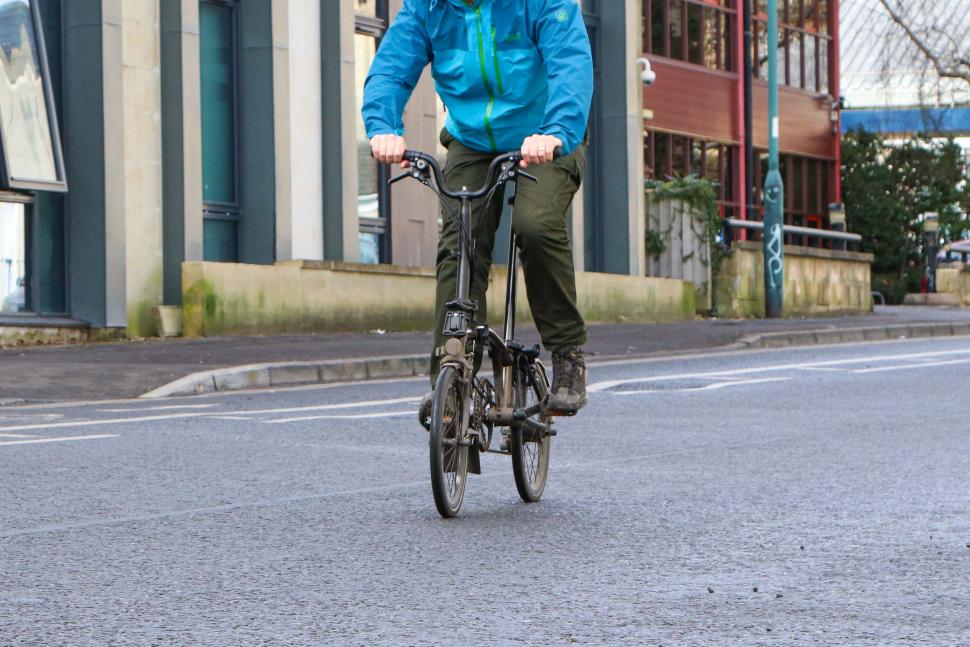
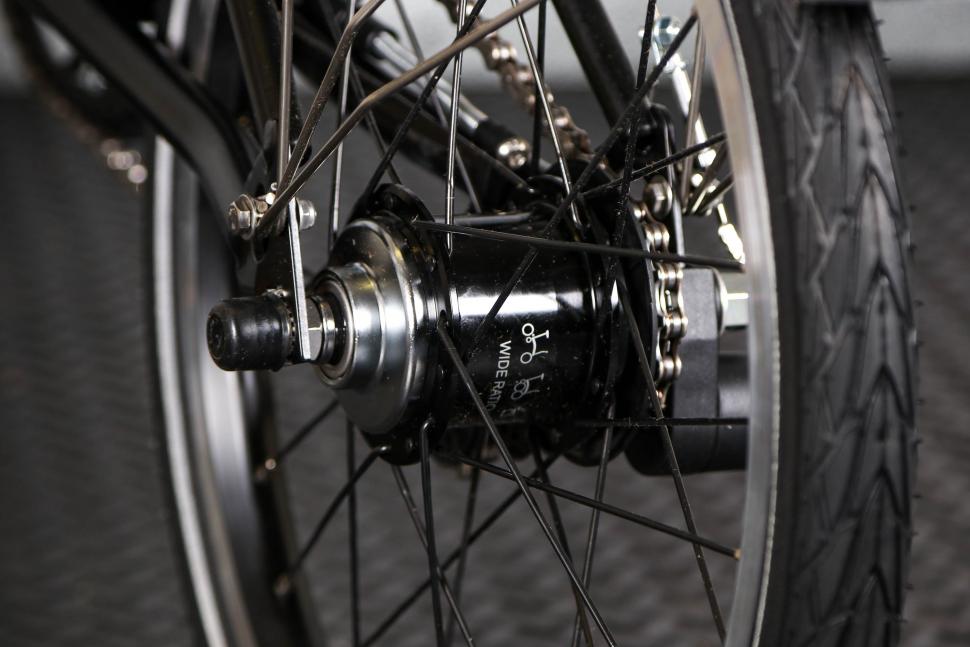

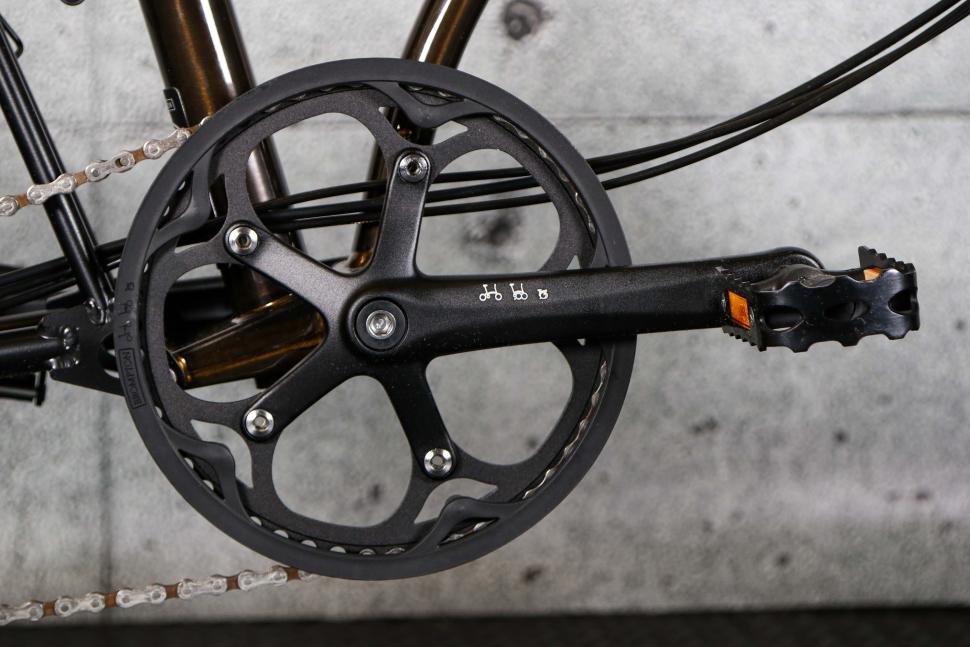

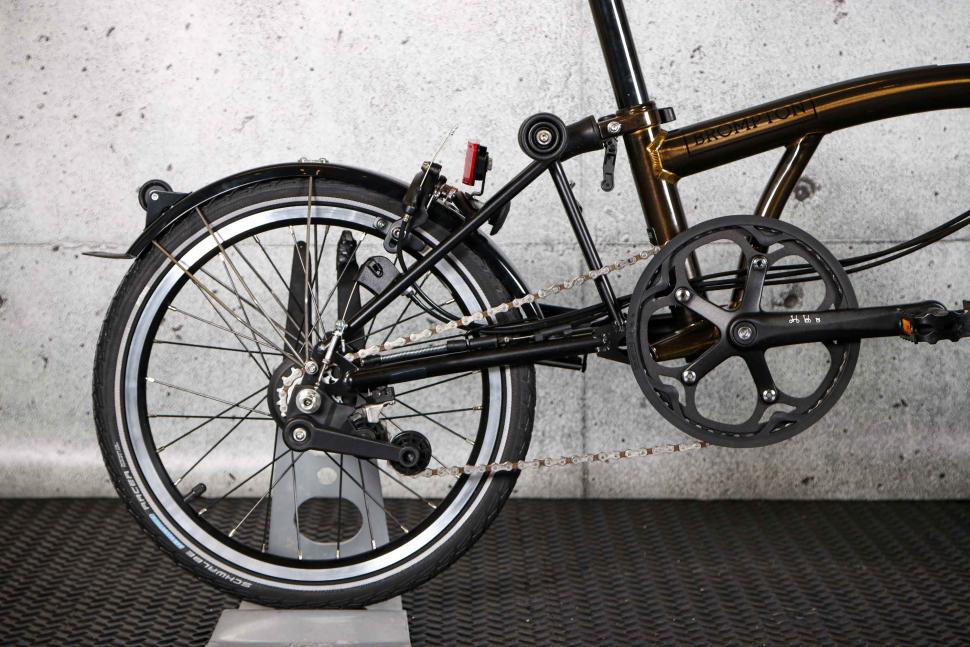
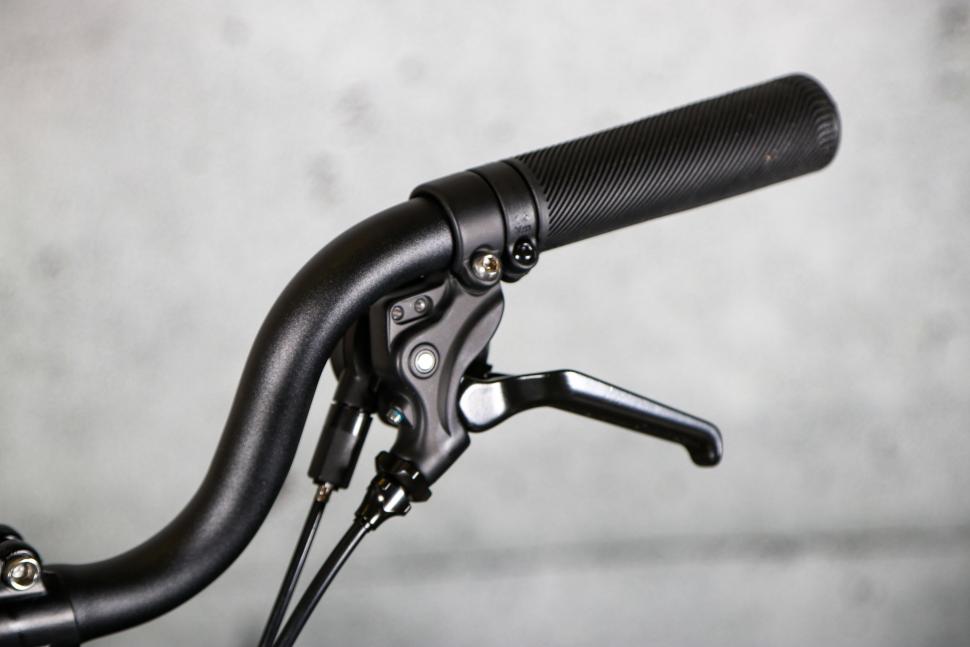
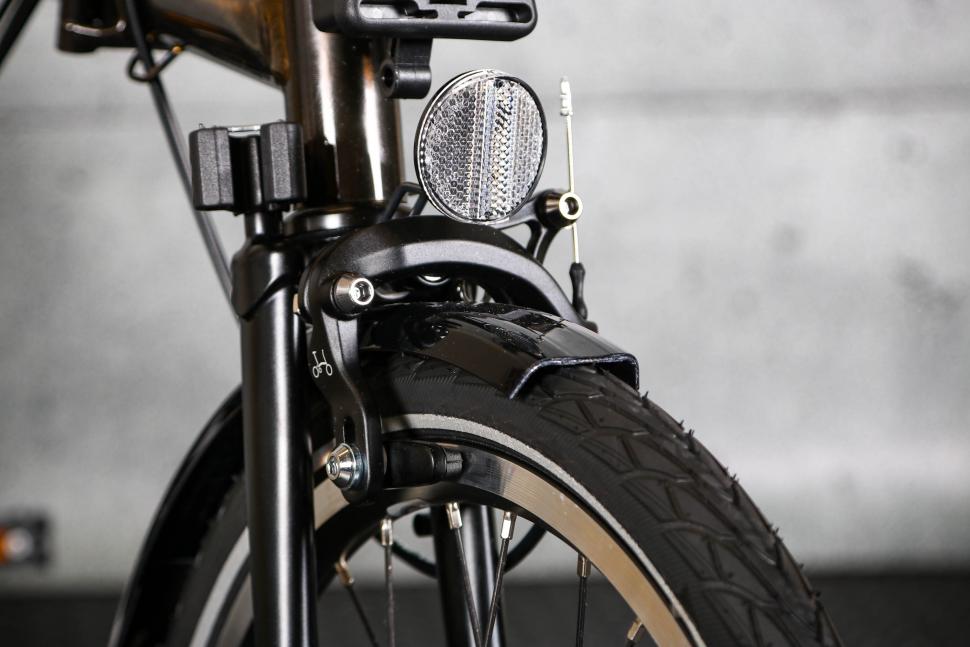











































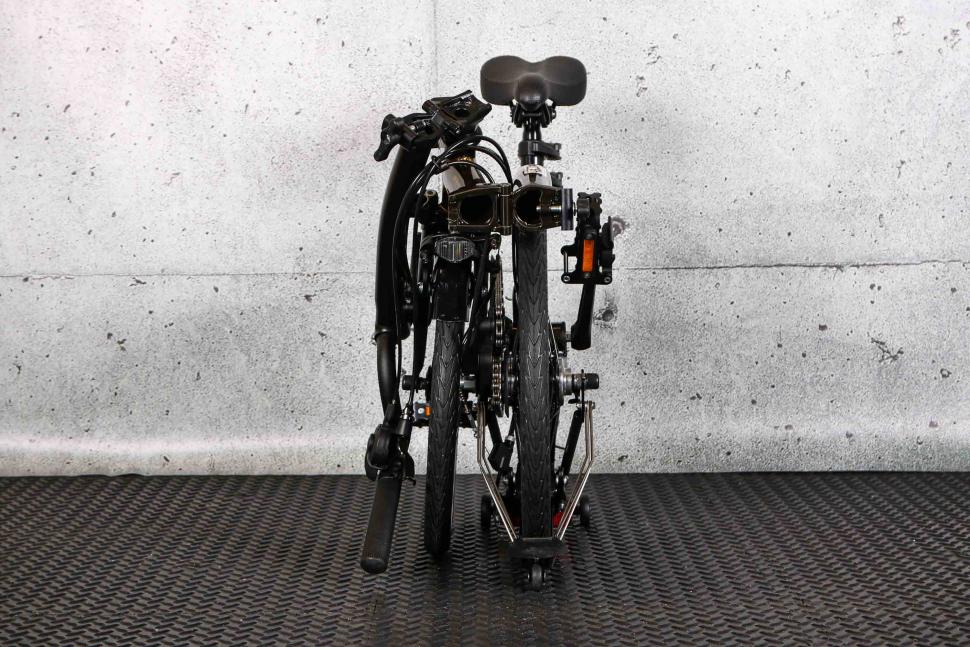
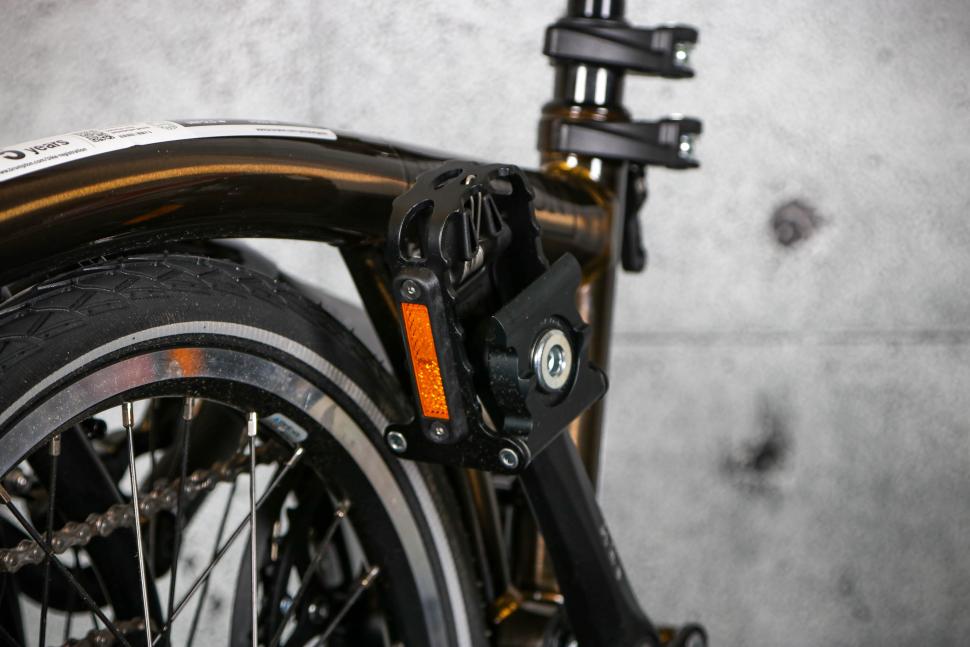

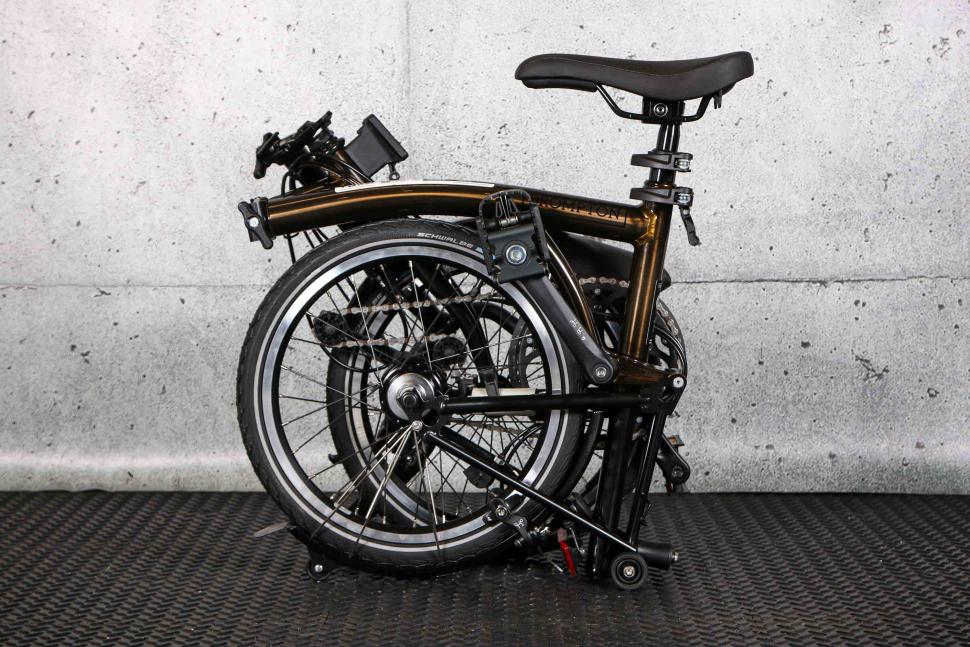

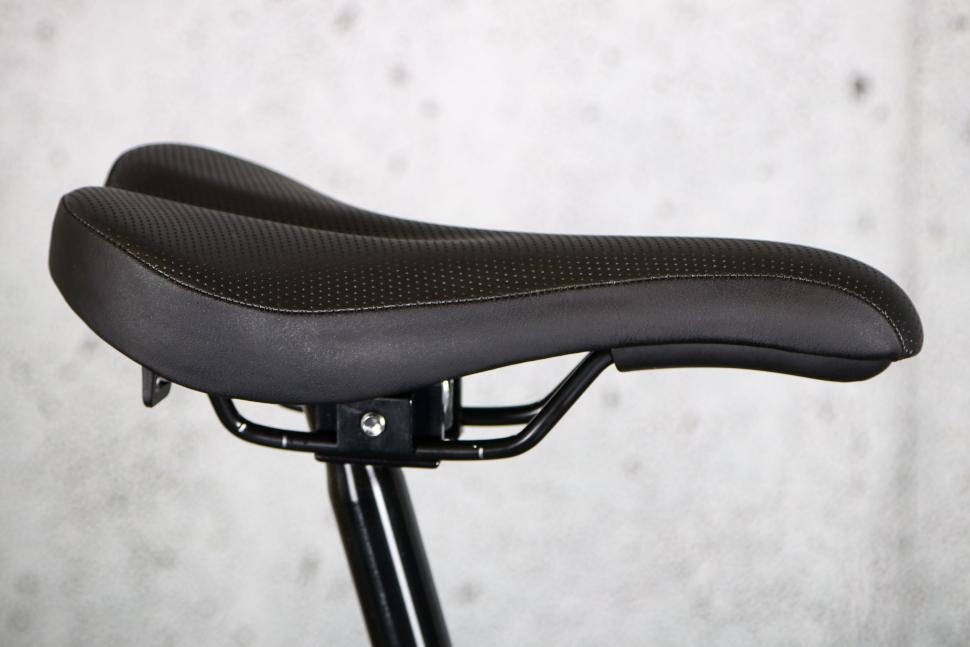
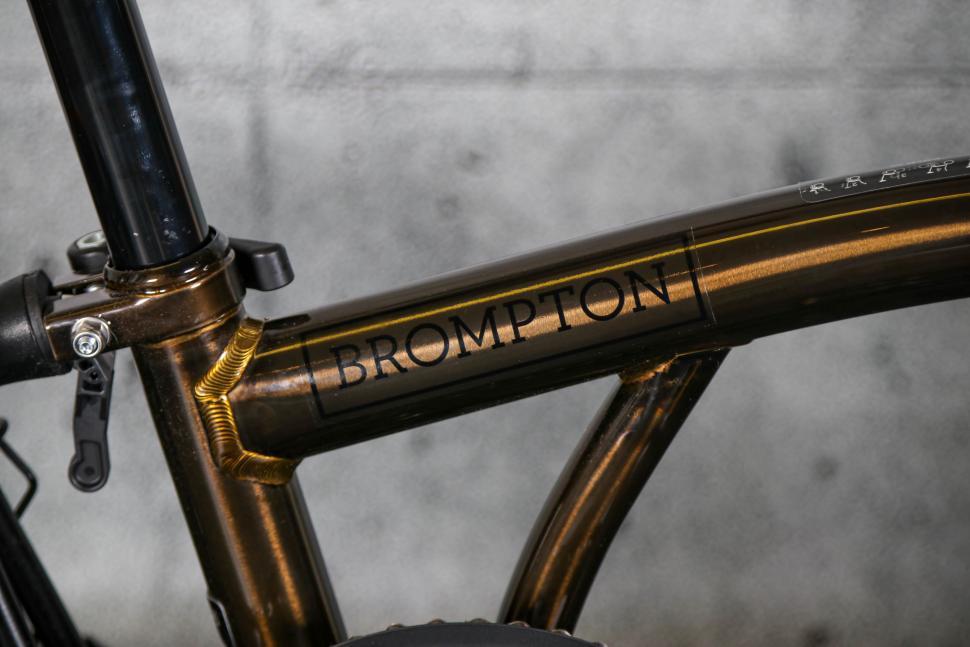
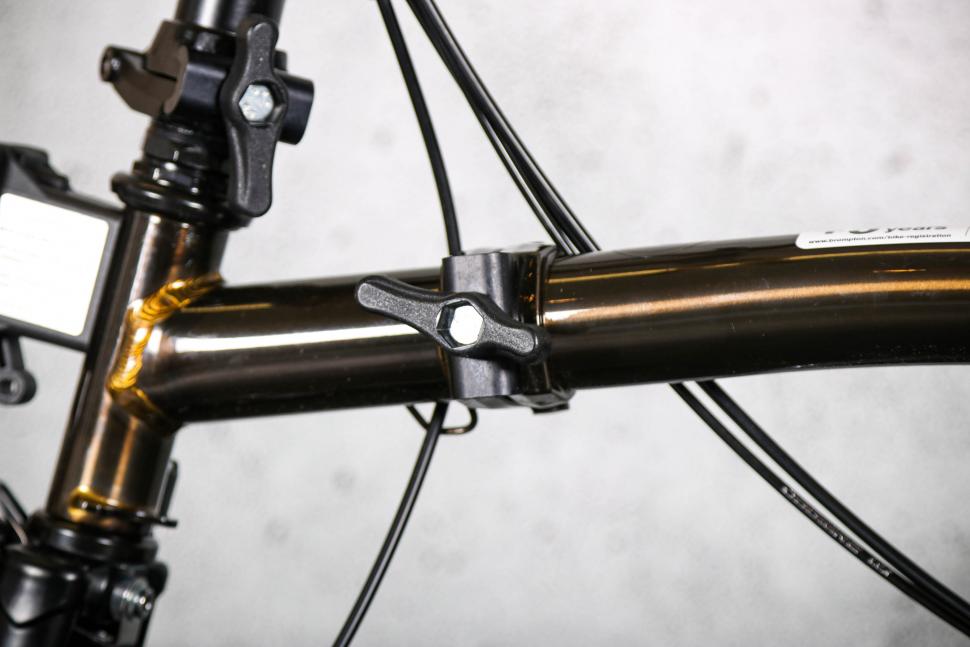
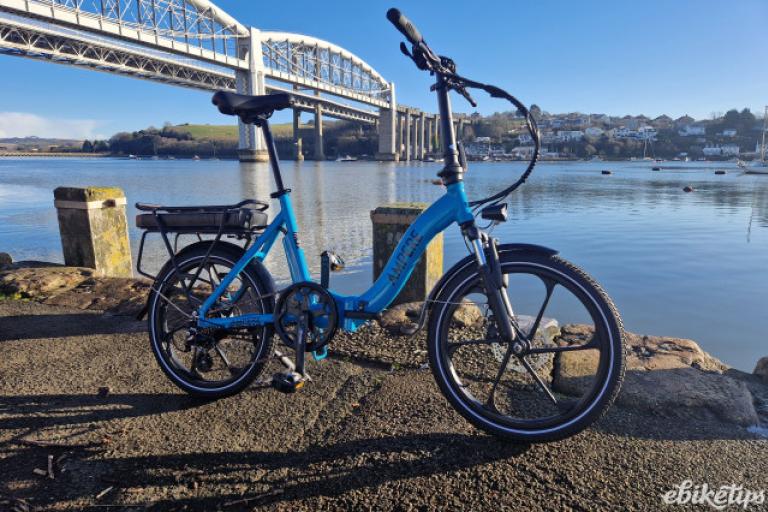
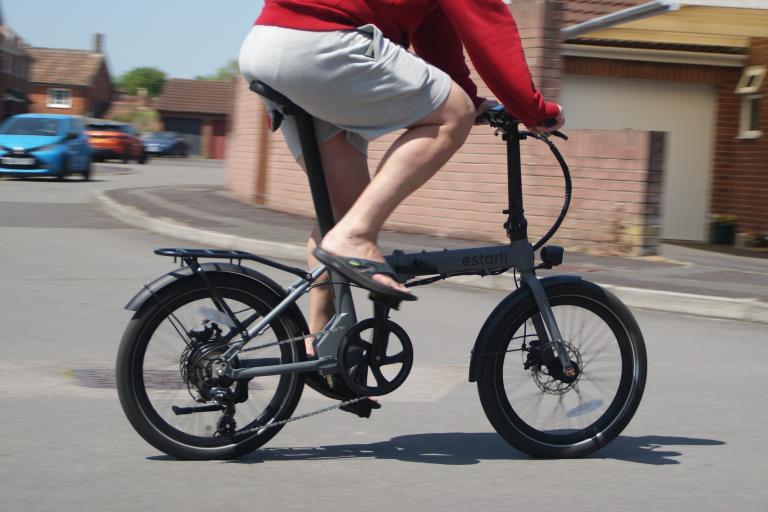
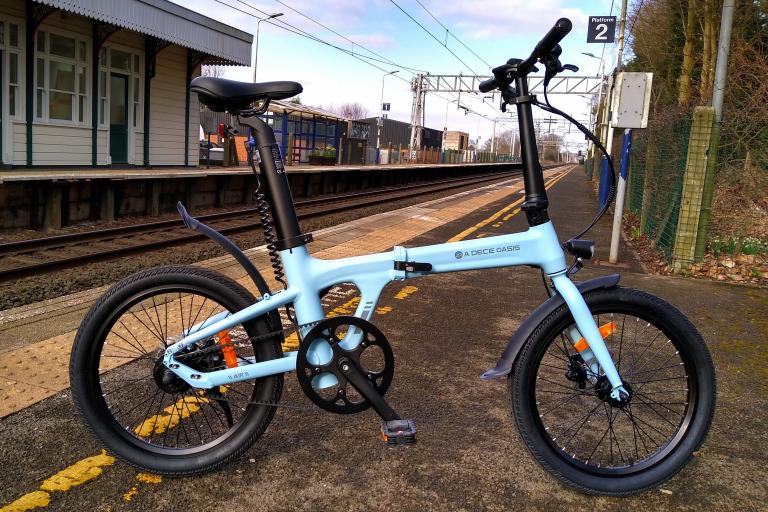
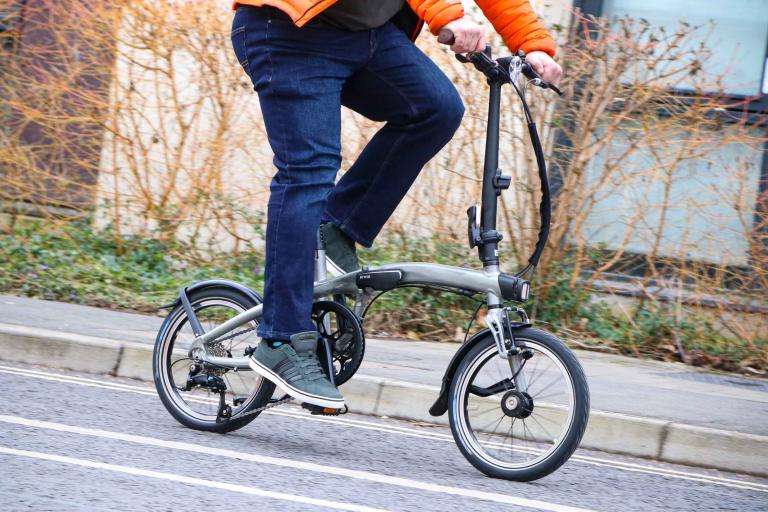
Add new comment
11 comments
"Brompton reckons that this extender seatpost will work for anyone with up to a 35cm inside leg."
Surely more like 35 inches (89 cm.)
I've got the C-6 and modified it slightly - different handlebars (halfway between flat and mid) - chainring and crank swap (along with bottom bracket) and saddle (Brooks B-17, which fits my behind like a tailored suit).
I've done several century rides on it - it worked perfectly. I get odd glances and a few laughs but when I fold it up and bring it into a restuarant at the end of the ride (105 miles was the last one) people are mostly astonished and I get a LOT of questions.
Although I have a Moulton CONE I find I'm riding the Brompton nearly 100 percent of the time. It's a GREAT bike.
Does this differ in any significant way to the 6-speed S6L I bought last year, or is it just a change in name?
I love mine, but it's definitely 1-2 MPH slower than my other bikes. I'm hoping better tyres will help when these wear out.
Not really that different, the equivalent to this under the previous model nomenclature would be M6L, that is to say they have the higher M type bars. Yours will have the low bars which were known as S type. 6 for 6 speed, L for mudguards, no rack.
The new Decathlon 16inch folder is an interesting alternative https://www.decathlon.co.uk/p/ultra-compact-1-second-light-folding-bike-...
One of the worst crashes I've had on a bike was on a Brompton. The tiny wheels are so dangerous considering the condition of UK roads.
My front wheel went into the slats on an ordinary drain cover and I went flying. Won't find me on one ever since.
That's interesting to hear, several of my friends have Bromptons and swear by them as the ultimate bike for the city, given the capacity to carry them on trains, buses and the underground and the fact that you can fold them up and take them into the office or pub and not worry about security. However, every time I've had a go on one I have thought exactly what you say, I would not ride one on a busy London road for a pension.
You get used to the twitchiness after a short while. After that it behaves deceptively like a 'regular' bike, unless something 'abnormal' happens such as hitting a pothole. Then the physics of small wheels inflated to high pressure come rushing in with a vengeance. I can understand your friends to a point, if compactness is an overriding concern then yes, it's a good solution. Even then, I'd take a hard look at someting with 20 in wheels.
In all other use cases I'd avoid a Brompton. You pay a lot for something very mediocre with outdated technology (discounting the yearly change in colourways ) and as I've experienjced myself: it's all very well for a couple of miles in the city. If you ride a heavy commute, it'll crumble underneath you. The stock rims seem to be made of butter. Braking performance in the wet is so-so at best. Etc etc.
An associate of mine did likewise on a Bike Friday Pocket Rocket and the result? He'll never ride small wheeled bikes again - anything - 406, 451 or even the smaller versions (Go Brompton and 16 inches).
Does this boil down to where you ride? Do you watch the road in front of you? Riding in the San Francisco Bay Area there are numerous potholes that will strike and flip even the most able rider and bike.
I'm really sorry you crunched. Here's hoping you avoid said "events" the rest of your riding career.
I don't begrudge Brompton charging what the market will bear, and good luck to them whilst they take whatever profit they can. However I do wonder if they will end up marooned in the "Brooks" end of the market, trading on their heritage and taking refuge in "bespoke" pricing, whilst others take up new ideas and keep pace with technology.
I still own a -heavily customised- Brompton though I'm not riding it anymore. Yes, you can do all the things described in the article but that doesn't make it the best option. I commuted on it for a year -23 km one way-, crossed the haute fagne (normally only don on a serious gravel or MTB) on it and it was all doable and -to a point- enjoyable. When I rode up Ventoux last year I encountered a guy doing the same on the French version of a Boris bike. He also made it.
Issues: a) prone to corrosion b) heavy c) for the performance and except if you really, really need the most compact folding option available, ridiculously expensive and d) the stock components are of frankly mediocre quality and if you clock up serious mileage, will quickly start to disintegrate below you. Small wheels at high pressure=uncomfortable and hitting even a modest pothole can spell disaster.
Its unique selling proposition is the compact form factor but imo that's really it.